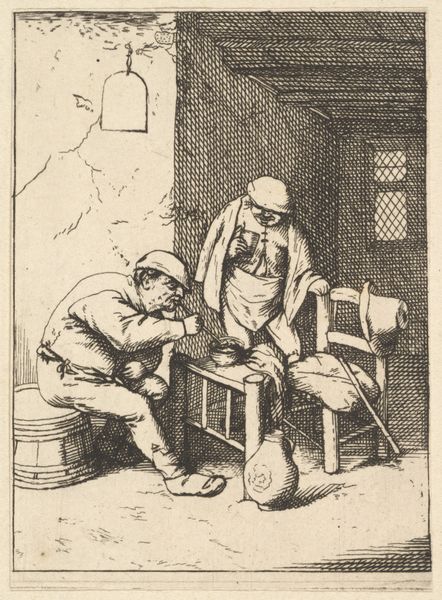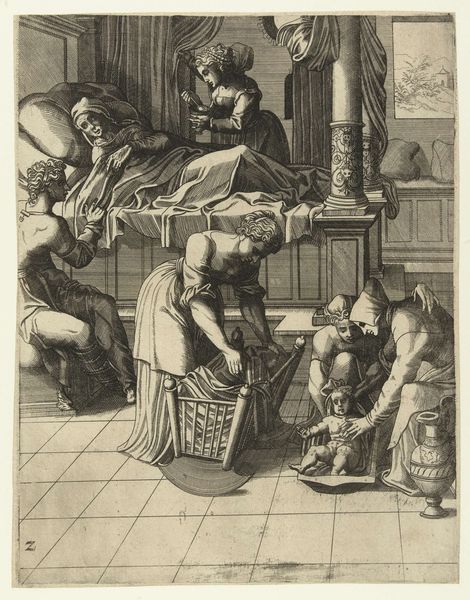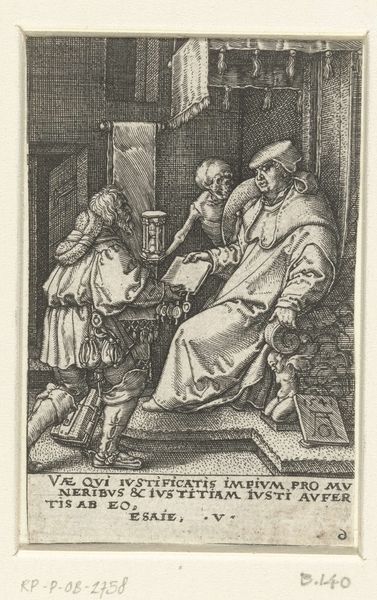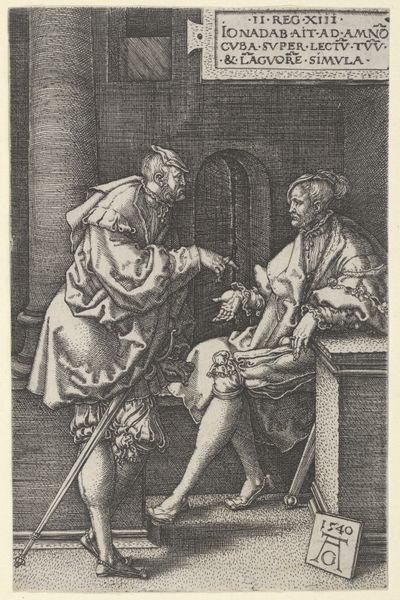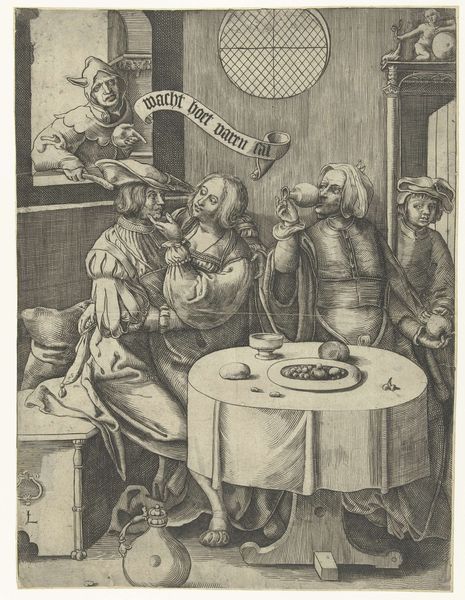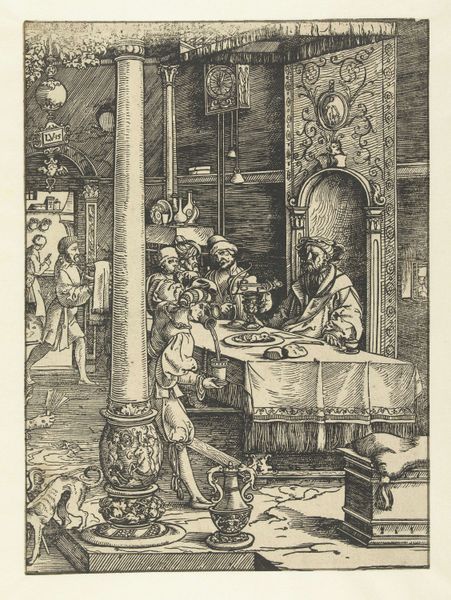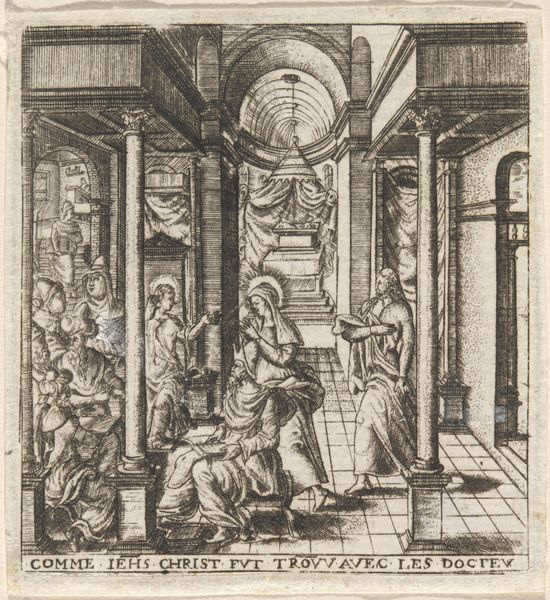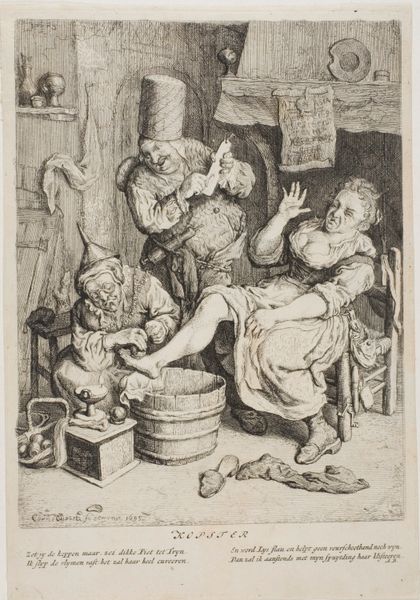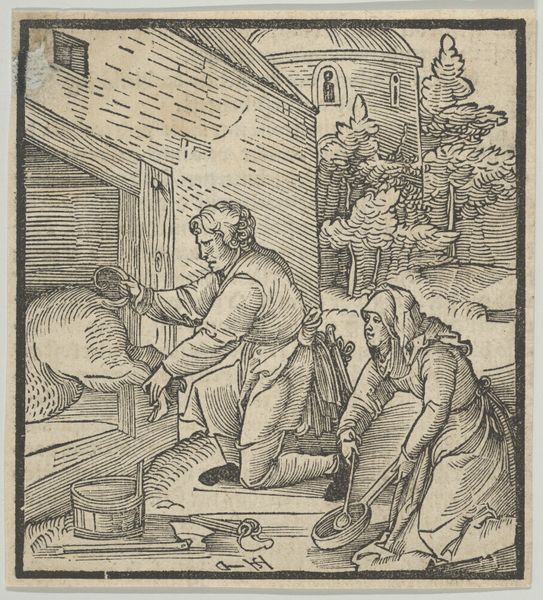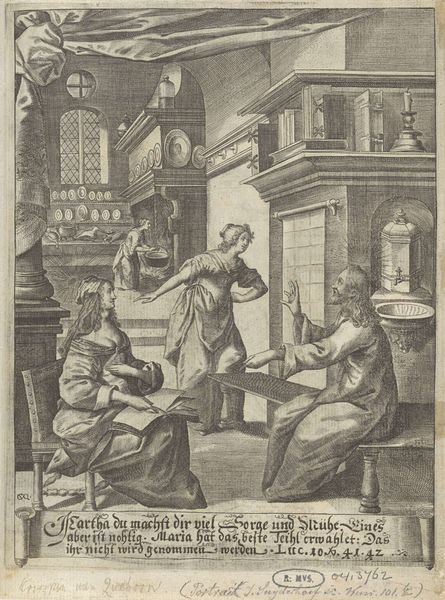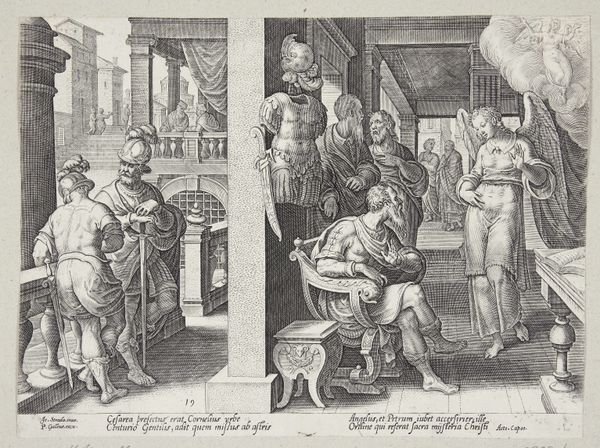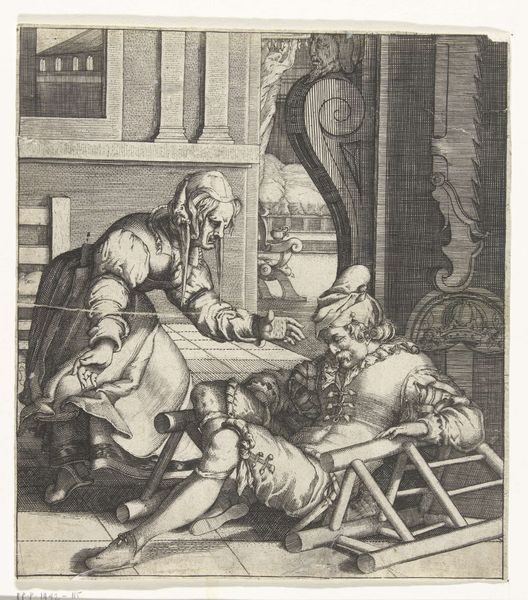
engraving
#
figuration
#
genre-painting
#
history-painting
#
northern-renaissance
#
engraving
Dimensions: height 175 mm, width 110 mm
Copyright: Rijks Museum: Open Domain
Curator: Let's take a look at Dirck Volckertsz Coornhert's engraving, "Niets kan dwaasheid verhelpen," created in 1557. Editor: My first impression is just...darkness. Not literally, as the engraving is exquisitely detailed in shades of gray, but thematically. It speaks of inescapable folly and futile effort. Curator: Precisely. The title translates to "Nothing Can Cure Foolishness," which the image viscerally represents. We see a man being pummeled in a mortar with a pestle—an act seemingly meant to eradicate his stupidity. The very material and instruments of craft here turn into the tools of moral improvement. What do you make of that relationship? Editor: I see the process here not just as symbolic, but intrinsically connected to its making as an engraving. The physical labor, the meticulous incising of lines, echoes the painstaking but ultimately fruitless endeavor to reshape human nature. Coornhert used those engraving techniques to deliver that clear message. Curator: Good point! Beyond the craftsmanship and tools being symbolic, the placement and composition is noteworthy, too. The background figures almost look like statues, which lends the overall presentation to allegory instead of reality. Editor: It’s powerful, indeed. The expressions, especially the grimacing face in the mortar, add an unnerving emotional weight, despite the physical humor inherent in the scene. Even the text inscription—both vernacular Dutch and Latin—adds to this feeling of learned but ultimately failed attempts to refine humankind. It becomes a very social critique via its own crafting. Curator: Exactly! This combination of accessible imagery, paired with the cultural weight of proverb, emphasizes how entrenched this futile activity becomes. One almost starts wondering if they will use a different tool, like the flail to the figure's left—but it’s an exercise in perpetual repetition. Editor: It makes you wonder how different the commentary might be, if he used different mediums of its time, but here we are, more than four centuries later, reflecting on folly in print. Curator: A truly fascinating work!
Comments
No comments
Be the first to comment and join the conversation on the ultimate creative platform.
